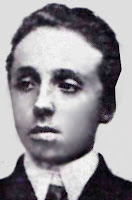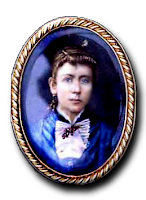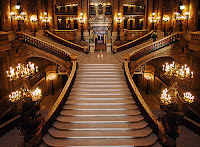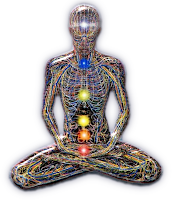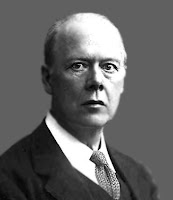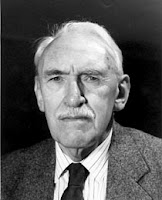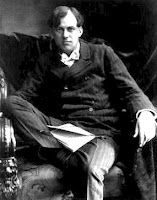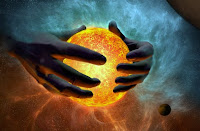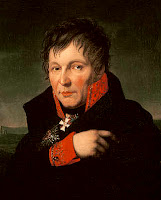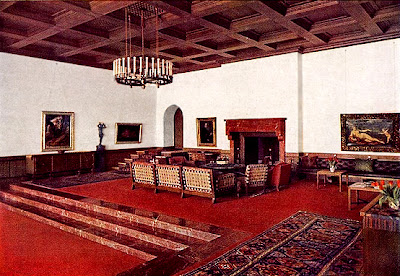The mountains of books that have been written about Hitler based on blind hatred and ignorance do little to describe or explain this enigmatic individual. How, I ponder, do these thousands of disparate portraits of Hitler in any way resemble the real man ?
People have come to accept a fiction, repeated a thousand times over, as reality.
Yet they have never seen Hitler, never spoken to him, never heard a word from his mouth.
The very name of Hitler immediately conjures up a grimacing devil, the fount of all of one’s negative emotions.
Like Pavlov’s bell, the mention of Hitler is meant to dispense with substance and reality.
In time, however, history will demand more than these summary judgements.
Hitler was a man of peace in 1936, a man of war from 1939
The first thing anyone noticed when he came into view was his small mustache.
Countless times he had been advised to shave it off, but he always refused: people were used to him the way he was.
He was not tall - no more than was Napoleon or Alexander the Great.
Hitler had deep blue eyes that many found fascinating and bewitching.
Some even said that there was an electric current that his hands were said to give off.
His face showed emotion or indifference according to the passion or apathy of the moment.
At times he was as though benumbed, saying not a word, while his jaws moved in the meanwhile as if they were grinding an obstacle to smithereens in the void.
Then he would come suddenly alive and launch into a speech directed at individual but, paradoxically, as though he were addressing a crowd of hundreds of thousands at Berlin’s Tempelhof airfield.
Then he became as if transfigured.
Even his complexion, otherwise dull, lit up as he spoke.
And at such times, to be sure, Hitler was strangely attractive, and as if possessed of magic powers.
Anything that might have seemed too solemn in his remarks, he quickly tempered with a touch of humour.
The picturesque word, the biting phrase were at his command.
In a flash he would paint a word-picture that brought a smile, or come up with an unexpected and disarming comparison.
He could be harsh, and even implacable in his judgements, and yet almost at the same time be surprisingly conciliatory, sensitive and warm.
After 1945 Hitler was accused of every cruelty, but it was not in his nature to be cruel.
He loved children.
It was an entirely natural thing for him to stop his car and share his food with young cyclists along the road. Once he gave his raincoat to a derelict plodding in the rain.
At midnight he would interrupt his work and prepare the food for his dog Blondi.
He could not bear to eat meat, because it meant the death of a living creature.
He refused to have so much as a rabbit or a trout sacrificed to provide his food.
He would allow only eggs on his table, because egg-laying meant that the hen had been spared rather than killed.
Hitler’s eating habits were a constant source of amazement to those around him.
How could someone on such a rigorous schedule, who had taken part in tens of thousands of exhausting mass meetings from which he emerged bathed with sweat, often losing two to four pounds in the process; who slept only three to four hours a night; and who, from 1940 to 1945, carried the whole world on his shoulders while ruling over 380 million Europeans: how could he physically survive on just a boiled egg, a few tomatoes, two or three pancakes, and a plate of noodles ? But he actually gained weight !
He drank only water.
He did not smoke, and would not tolerate smoking in his presence.
At one or two o’clock in the morning he would still be talking, untroubled, close to his fireplace, lively, often amusing.
He never showed any sign of weariness.
Dead tired his audience might be, but not Hitler.
Hitler’s most notable characteristic was ever his simplicity.
The most complex of problems resolved itself in his mind into a few basic principles.
His actions were geared to ideas and decisions that could be understood by anyone.
The labourer from Essen, the isolated farmer, the Ruhr industrialist, and the university professor could all easily follow his line of thought.
The very clarity of his reasoning made everything obvious.
His behaviour and his lifestyle never changed even when he became the ruler of Germany.
He dressed and lived frugally.
During his early days in Munich, he spent no more than a mark per day for food.
At no stage in his life did he spend anything on himself.
Throughout his thirteen years in the chancellery he never carried a wallet or ever had money of his own.
Hitler was self-taught and made not attempt to hide the fact.
The smug conceit of intellectuals, their shiny ideas packaged like so many flashlight batteries, irritated him at times.
His own knowledge he had acquired through selective and unremitting study, and he knew far more than thousands of diploma-decorated academics.
I don’t think anyone ever read as much as he did.
He normally read one book every day, always first reading the conclusion and the index in order to gauge the work’s interest for him.
He had the power to extract the essence of each book and then store it in his computer-like mind.
he often talked about complicated scientific books with faultless precision, even at the height of the war.
His intellectual curiosity was limitless.
He was readily familiar with the writings of the most diverse authors, and nothing was too complex for his comprehension.
He had a deep knowledge and understanding of Buddha, Confucius, and Jesus Christ, as well as Luther, Calvin, and Savonarola; of literary giants such as Dante, Schiller, Shakespeare, and Goethe; and of analytical writers such as Renan and Gobineau, Chamberlain and Sorel.
He had trained himself in philosophy by studying Aristotle and Plato.
He could quote entire paragraphs of Schopenhauer from memory, and for a long time carried a pocked edition of Schopenhauer with him. Nietzsche taught him much about the willpower.
His thirst for knowledge was unquenchable.
He spent hundreds of hours studying the works of Tacitus and Mommsen, military strategists such as Clausewitz, and empire builders such as Bismarck. Nothing escaped him: world history or the history of civilizations, the study of the Bible and the Talmud, Thomistic philosophy and all the master- pieces of Homer, Sophocles, Horace, Ovid, Titus Livius and Cicero. He knew Julian the Apostate as if he had been his contemporary.
His knowledge also extended to mechanics.
He knew how engines worked; he understood the ballistics of various weapons; and he astonished the best medical scientists with his knowledge of medicine and biology.
The universality of Hitler’s knowledge may surprise or displease those unaware of it, but it is nonetheless a historical fact: Hitler was probably one of the most cultivated men of this century.
Many times more so than Churchill, an intellectual mediocrity; or than Pierre Laval, with his mere cursory knowledge of history; or than Roosevelt; or Eisenhower, who never got beyond detective novels.
Even during his earliest years, Hitler was different than other children.
He had an inner strength and was guided by his spirit and his instincts.
He could draw skilfully when he was only eleven years old.
His sketches made at that age show a remarkable firmness and liveliness.
His first paintings and watercolours, created at age 15, are full of poetry and sensitivity.
One of his most striking early works, “Fortress Utopia,” also shows him to have been an artist of rare imagination.
His artistic orientation took many forms.
He wrote poetry from the time he was a lad.
He dictated a complete play to his sister Paula who was amazed at his presumption.
At the age of 16, in Vienna, he launched into the creation of an opera.
He even designed the stage settings, as well as all the costumes; and, of course, the characters were Wagnerian heroes.
More than just an artist, Hitler was above all an architect.
Hundreds of his works were notable as much for the architecture as for the painting.
From memory alone he could reproduce in every detail the onion dome of a church or the intricate curves of wrought iron, indeed, it was to fulfil his dream of becoming an architect that Hitler went to Vienna at the beginning of the century.
When one sees the hundreds of paintings, sketches and drawings he created at the time, which reveal his mastery of three dimensional figures, it is astounding that his examiners at the Fine Arts Academy failed him in two successive examinations.
German historian Werner Maser, no friend of Hitler, castigated these examiners: “All of his works revealed extraordinary architectural gifts and knowledge. The builder of the Third Reich gives the former Fine Arts Academy of Vienna cause for shame.”
Impressed by the beauty of the church in a Benedictine monastery where he was part of the choir and served as an altar boy, Hitler dreamt fleetingly of becoming a Benedictine monk.
And it was at that time, too, interestingly enough, that whenever he attended mass, he always had to pass beneath the first swastika he had ever seen: it was graven in the stone escutcheon of the abbey portal.
Hitler’s father, a customs officer, hoped the boy would follow in his footsteps and become a civil servant.
His tutor encouraged him to become a monk.
Instead the young Hitler went, or rather he fled, to Vienna.
And there, thwarted in his artistic aspirations by the bureaucratic mediocraties of academia, he turned to isolation and meditation.
Lost in the great capital of Austria-Hungary, he searched for his destiny.
During the first thirty years of Hitler’s life, the date April 20, 1889, meant nothing to anyone.
He was born on that day in Branau, a small town in the Inn valley.
During his exile in Vienna, he often thought of his modest home, and particularly of his mother.
When she fell ill, he returned home from Vienna to look after her.
For weeks he nursed her, did all the household chores, and supported her as the most loving of sons.
When she finally died, on Christmas eve, his pain was immense.
Wracked with grief, he buried his mother in the little country cemetery: “I have never seen anyone so prostrate with grief,” said his mother’s doctor, who happened to be Jewish.
In his room, Hitler always displayed a picture of his mother.
The memory of the mother he loved was with him until the day he died.
She had blue eyes like his and a similar face.
Her maternal intuition told her that her son was different from other children
She acted almost as if she knew her son’s destiny.
When she died, she felt anguished by the immense mystery surrounding her son.
Throughout the years of his youth, Hitler lived the life of a virtual recluse.
He greatest wish was to withdraw from the world.
At heart a loner, he wandered about, ate meagre meals, but devoured the books of three public libraries.
He abstained from conversations and had few friends.
It is almost impossible to imagine another such destiny where a man started with so little and reached such heights.
Alexander the Great was the son of a king.
Napoleon, from a well-to-do family, was a general at twenty-four.
Fifteen years after Vienna, Hitler would still be an unknown corporal.
Thousands of others had a thousand times more opportunity to leave their mark on the world.
Hitler was not much concerned with his private life.
In Vienna he had lived in shabby, cramped lodgings, but for all that he rented a piano that took up half his room, and concentrated on composing his opera.
He lived on bread, milk, and vegetable soup.
But he never stopped painting or reading.
Landlords and landladies in Vienna and Munich all remembered him for his civility and pleasant disposition. His behaviour was impeccable.
His room was always spotless, his meagre belongings meticulously arranged, and his clothes neatly hung or folded.
He washed and ironed his own clothes, something which in those days few men did.
He needed almost nothing to survive, and money from the sale of a few paintings was sufficient to provide for all his needs.
Hitler had not yet focused on politics, but without his rightly knowing, that was the career to which he was most strongly called.
Politics would ultimately blend with his passion for art.
People, the masses, would be the clay the sculptor shapes into an immortal form.
The human clay would become for him a beautiful work of art like one of Myron’s marble sculptures, a Hans Makart painting, or Wagner’s Ring Cycle.
His love of music, art, and architecture had not removed him from the political life and social concerns of Vienna.
When Hitler later said that he had formed his social and political doctrine in Vienna, he told the truth.
Ten years later his observations made in Vienna would become the order of the day.
Thus Hitler was to live for several years in the crowded city of Vienna as a virtual outcast, yet quietly observing everything around him.
His strength came from within.
He did not rely on anyone to do his thinking for him.
Exceptional human beings always feel lonely amid the vast human throng.
Hitler saw his solitude as a wonderful opportunity to meditate and not to be submerged in a mindless sea.
In order not to be lost in the wastes of a sterile desert, a strong soul seeks refuge within himself.
Hitler was such a soul.
The lightning in Hitler’s life would come from the Word.
All his artistic talent would be channelled into his mastery of communication and eloquence.
Hitler would never conceive of popular conquests without the power of the Word.
He would enchant and be enchanted by it.
He would find total fulfilment when the magic of his words inspired the hearts and minds of the masses with whom he communed.
He would feel reborn each time he conveyed with mystical beauty the knowledge he had acquired in his lifetime.
Hitler’s incantatory eloquence will remain, for a very long time.
The power of Hitler’s word is the key.
Did Hitler believe in God ?
He believed deeply in God.
He called God the Almighty, master of all that is known and unknown.
He acknowledged that every human being has spiritual needs.
The song of the nightingale, the pattern and colour of a flower, continually brought him back to the great problems of creation.
No one in the world has spoke so eloquently about the existence of God.
He held this view not because he was brought up as a Christian, but because his analytical mind bound him to the concept of God.
Hitler’s faith transcended formulas and contingencies.
God was for him the basis of everything, the ordainer of all things, of his destiny and that of all others.
 |
| © Copyright Peter Crawford 2013 |
"At the age of twelve, I saw ... the first opera of my life, Lohengrin. In one instant I was addicted.
My youthful enthusiasm for the Bayreuth Master knew no bounds."
“When human hearts break and human souls despair, then from the twilight of the past, the great conquerors of distress and care, of shame and misery, of spiritual slavery and physical compulsion, look down and hold out their eternal hands to the despairing mortals. Woe to the people ashamed to grasp them !”
"He who would live must fight
And he who would not contend in this world of eternal struggle
Does not deserve to live."
My youthful enthusiasm for the Bayreuth Master knew no bounds."
“When human hearts break and human souls despair, then from the twilight of the past, the great conquerors of distress and care, of shame and misery, of spiritual slavery and physical compulsion, look down and hold out their eternal hands to the despairing mortals. Woe to the people ashamed to grasp them !”
"He who would live must fight
And he who would not contend in this world of eternal struggle
Does not deserve to live."
"I am founding an Order.
It is from the burgs that the second
stage will emerge – the stage of the Man-God, when Man will be the measure and centre of
the world. The Man-God, that splendid Being, will be an object of worship ... But there are
other stages about which I am not permitted to speak ..."
"It is my ultimate aim to perform an act of creation, a divine operation, the goal of a biological mutation which will result in an unprecedented exaltation of the human race and the appearance of a new race of heroes, demi-gods and god-men".
"Creation is not finished. Man is clearly approaching a phase of metamorphosis. The earlier human species has already reached the stage of dying out.... All of the force of creation will be concentrated in a new species... which will surpass infinitely modern man.... "
"We shall rejuvenate the world. This world is near its end."
"Do you now appreciate the depth of our National Socialist Movement? Can there be anything greater and more all comprehending? Those who see in National Socialism nothing more than a political movement know scarcely anything of it. It is more even than religion; it is the will to create mankind anew !"
“All of the force of creation will be concentrated in a new species... which will surpass infinitely modern man.... "
"The new man is living amongst us now! He is here!...I will tell you a secret. I have seen the new man. He is intrepid and cruel. I was afraid of him."
"We are at the outset of a tremendous revolution in moral ideas and man's spiritual orientation. A new age of the magic interpretation of the world is coming, an interpretation in terms of will and not the intelligence."
"The real destiny of man is something the average man could not conceive and would be unable to stomache if given a glance.
Our revolution is the final stage in an evolution that will end by abolishing history.
My Party members have no conception of the dreams that haunt my mind or the grand design for the foundations that will have been laid before I die.
The world has reached a pivetol point and will undergo an upheaval which you unititated people cannot understand"
"The old beliefs will be brought back to honor again.
The whole secret knowledge of nature, of the divine, the demonic.
We will wash off the Christian veneer and bring out a religion peculiar to our race."
"The real destiny of man is something the average man could not conceive and would be unable to stomache if given a glance.
Our revolution is the final stage in an evolution that will end by abolishing history.
My Party members have no conception of the dreams that haunt my mind or the grand design for the foundations that will have been laid before I die.
The world has reached a pivetol point and will undergo an upheaval which you unititated people cannot understand"
"The old beliefs will be brought back to honor again.
The whole secret knowledge of nature, of the divine, the demonic.
We will wash off the Christian veneer and bring out a religion peculiar to our race."
for more information see
 |
| © Copyright Peter Crawford 2013 |
 |
| © Copyright Peter Crawford 2013 |
'And the Will lieth therin, which dieth not.
Who knoweth the mysteries of the Will and its vigour ?
For God is but a great Will pervading all things by the nature of its intentness.
Man doth not yield himself to the Angels nor to Death uterly, save only through the weakness of his feeble Will !'
Joseph Glanvill - (1636–1680)
 |
| © Copyright Peter Crawford 2013 |
 |
| © Copyright Peter Crawford 2013 |
Click here for August Kubizek's own fascinating account of his friendship with Adolf Hitler
'Hitler Mein Jugendfreund'
'Hitler Mein Jugendfreund'
(Hitler - My Boyhood Friend)























